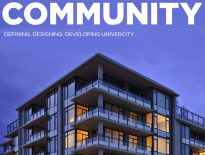The Handprint of a Flower
The flower is used in so many metaphors. It is a regular stand-in for love, femininity, and even painfully fleeting beauty. A flower is a blossoming soul; the thing with which the earth laughs. In the case of the Living Building Challenge, it has provided an appropriate and elegant model for the efficiency of a building. As such a model, and as a lens through which to measure sustainability, the flower has served us well. But when we widen that lens, we are reminded that unless a flower has been cut and placed in a bud vase or fashioned into a boutonniere, it does not exist in isolation. It interacts with the soil, water, and air around it. It is part of a plant—a plant that is a member of a community of other plants and other living beings. It exists, and plays a role, within an ecosystem. It sits on a landscape that is part of a watershed. And the flower is not just the pretty, highly functioning part of its plant–it is the bearer of seeds and pollen that support its propagation.
The handprint as metaphor for positive, intentional change is also powerful. Particularly because a handprint has, as Gregory Norris says, “the possibility to ripple outward with no limit.”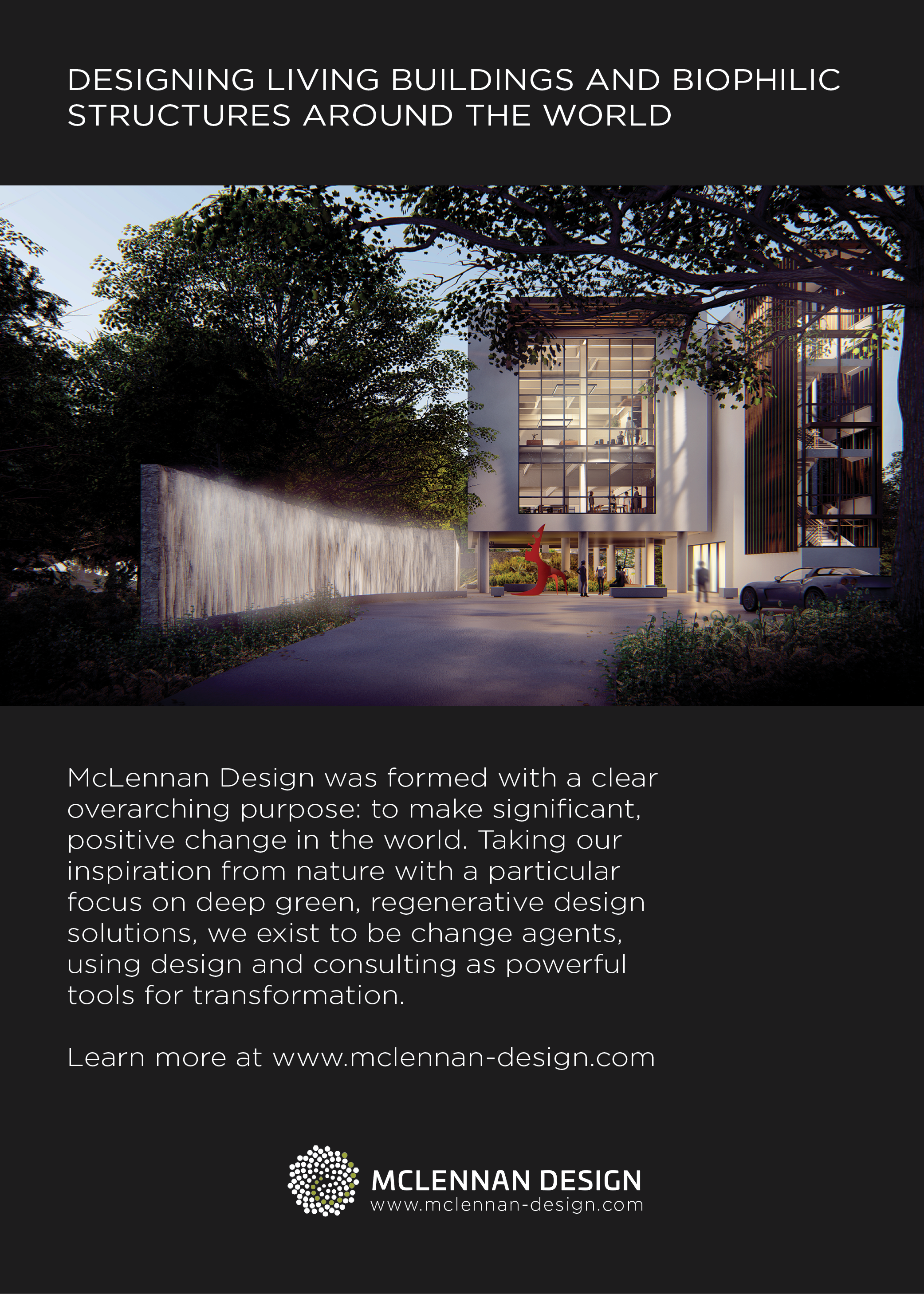
When it comes to the flowers we create in the form of Living Buildings, why restrict the size and ripple effect of our handprints—particularly on water and ecology—by limiting our scope to the building itself?
While I have had the honor of contributing to the creation of Living Buildings—primarily by guiding the design of low-energy, nature-based systems to ensure the building meets the net-positive water standards of the water petal—I have also been involved in a larger body of work that Biohabitats does: planning, designing, and constructing projects that protect and restore ecosystems, enhance ecosystem function in the built environment, and reconnect people to place. We may lack a beautifully appropriate metaphor with which to label the outcome of this type of work, but we are very familiar with the handprint concept. This work is done with a long view and a dynamic approach that considers factors like climate change and environmental justice. People who do this type of work understand the downstream effect—often literally—of positive change that extends beyond a negative footprint.
A great example of such a handprint can be found at a public school located 45 minutes from Cleveland. In the early 2000s, two science teachers at Hudson High School spearheaded an effort to restore a stream that ran through school property. The stream had suffered a double whammy from its rapidly urbanizing watershed: its naturally meandering channel was straightened to accommodate development, and afterwards, it received so much stormwater it became eroded and separated from its floodplain. Its crumbling banks were a safety hazard; it provided little habitat and even less beauty; and during storms, it became an expressway for fast-flowing, polluted stormwater to enter nearby Tinker’s Creek, the largest tributary to the Cuyahoga River. The Cuyahoga River, a body of water once so polluted it caught fire and sparked the Clean Water Act, flows through Cleveland and right into Lake Erie, a source of drinking water for over 11 million people.
Ultimately, those two teachers, and others who joined the effort, secured funding from the Cuyahoga County Board of Health, the City of Hudson, and the U.S. EPA, and hired Biohabitats to design and construct a stream restoration project. The goals were to restore stability and ecological function to the tributary. This meant slowing down and filtering polluted runoff; allowing water from big storms to flow over the banks and into wetlands that would slow down and filter pollution; and providing habitat for fish, birds, and other critters. Had the project done just that, the restoration would have left a decent handprint. After all, it restored 1,700 feet of stream, created a conservation easement, improved safety, added habitat, and helped clean water that would ultimately flow into Lake Erie. But what really extended the fingers of this project’s handprint was the involvement of students, and the school’s ongoing use of the site as a living laboratory for experiential education.
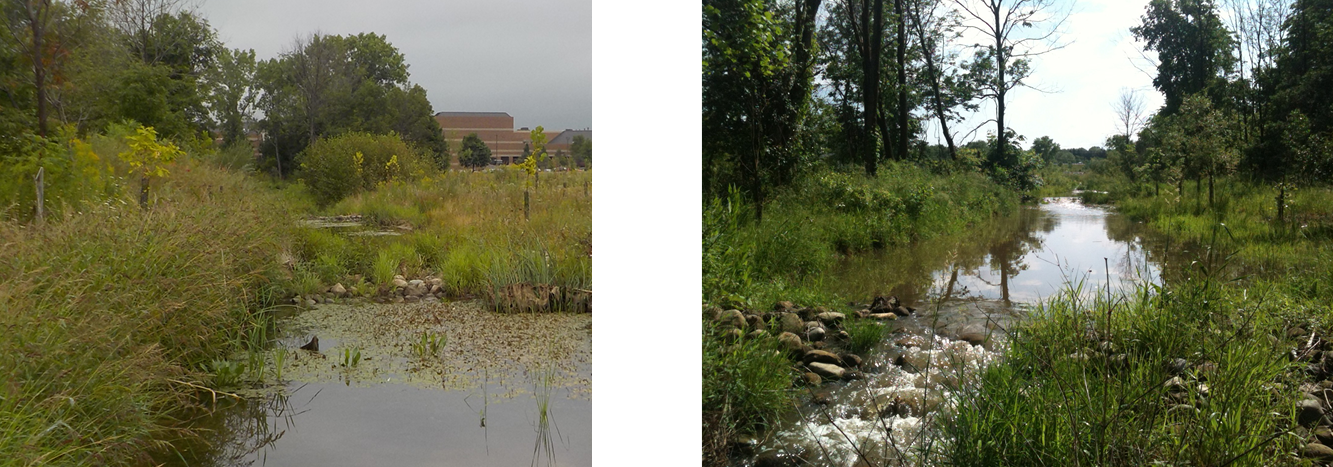
The stream running through Hudson High School property after restoration by Biohabitats. Images courtesy of Biohabitats
At the project’s start, students were taught how to do a Headwater Habitat Evaluation Index so they could monitor the project. Students participated in a charrette and helped craft the restoration design. Photography students documented physical changes in the stream system. When it was time to install riparian plants, students served as the landscaping crew. The site was dubbed the “Land Lab,” as it became a living, outdoor classroom, where biology, chemistry, and environmental science students could see, hear, smell, and touch subjects they had previously only read about in textbooks. Teachers and students created a blog, where they provided regular updates on the restoration, and on the life sciences and life lessons learned in the Land Lab.
That project was completed six years ago, and Hudson High students still strap on waders, get into the Land Lab, and search for macroinvertebrates. In the process, they gain an understanding of their school’s—and their own—place within the landscape, watershed, and broader community of life. Like a flower, that project is propagating seeds. Thirty miles north of Hudson, a similar stream restoration project is underway at the Willoughby-Eastlake School of Innovation, a STEM-focused public school. Teachers who were initially unaware that there was a stream on their property are now eager to get students out to their future Land Lab for hands-on education. Fifth-grade science teachers, whose curriculum includes the topic of ecosystems, are already asking if students can remove invasive species as part of their problem-based learning.
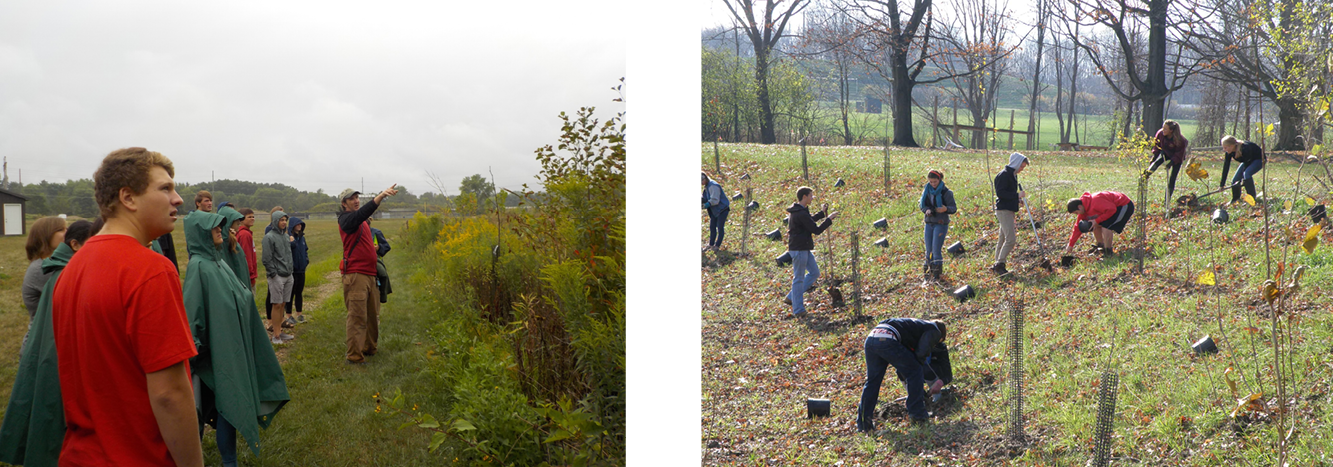
Students getting involved with the Land Lab at Hudson High. Images courtesy of Biohabitats
This type of handprint is not limited to schools, which are admittedly ripe with ripple effect potential. And you don’t have to be an ecological consultant to make such an impression. Architects have incredible power to do this, and an example is right in the Living Building portfolio: the Dixon Water Foundation’s Betty and Clint Josey Pavilion. Through its headquarters in Decatur, Texas, and its working cattle ranches, the Foundation promotes healthy watersheds by demonstrating and teaching people—mainly ranchers—about regenerative land management. While ranchers often hold a deep connection to the land, their livestock operations may degrade it, and negatively impact water quality for everyone and everything downstream. The Foundation’s new, 5,400-square-foot pavilion, which was designed by Lake|Flato and became the first certified Living Building in Texas, is a beautiful, functional space that also demonstrates the sustainability practices the Foundation teaches. As the team’s water consultant, Biohabitats designed a system that treats 100% of the pavilion’s wastewater through constructed wetlands and a recirculating sand filter, reuses it for irrigation, and returns it to the natural water cycle.

The Josey Pavilion. Image courtesy of Dror Baldinger
A Living Building that is used to educate others about sustainable land management? Boom. Handprint. One that protects water in a region with seasonal extremes? Ripple effect. What really expands this handprint, however, is the way the building connects people to the landscape. In the tranquil, low-lying, open-air pavilion, you not only see the sweeping tallgrass prairie that surrounds you, you feel its breezes. You hear the swishing of its grasses and the buzzing of its insects. Without a word or an interpretive sign, you understand your place in this biological community, and it is one of steward. The handprint of a paradigm shift is infinite.
Imagine the massive, collective handprint those of us in the Living Building community could create, even when working outside the sphere of Living Building projects, by carrying this ethic into all of our work. During the early design phases of the AIA COTE Top 10 Award-winning Engineered Biosystems Building at Georgia Tech, my colleague, Erin English, participated in a charrette convened by Lake|Flato Architects to inspire and engage the client and design team around innovative water, energy, and site goals. Erin’s role was what it often is when Biohabitats participates in high-performance green building projects: planning and designing systems that reduce the water footprint, enhance ecological function, and serve as inspirational elements. When the time came to discuss water, most team members were focused on where and how to flush the building’s toilets. After waiting for the room to settle, Erin presented aerial images of Chattahoochee River watershed, pointing out the building’s location relative to this body of water that carved the land and helped define the region. Erin also mentioned that the building feeds into a combined sewer, the kind infamous for beelining pollution to surrounding waterbodies during storms. Rather than ask “Where will we flush our toilets?” Erin asked, “How can this building be a better steward of its watershed? How can it positively impact the Chattahoochee River and the people and natural systems it supports?” Erin said she could feel the energy in the room shift, as the team widened the lens from the building alone to its role, its impact, and finally its potential, within the campus and wider community.
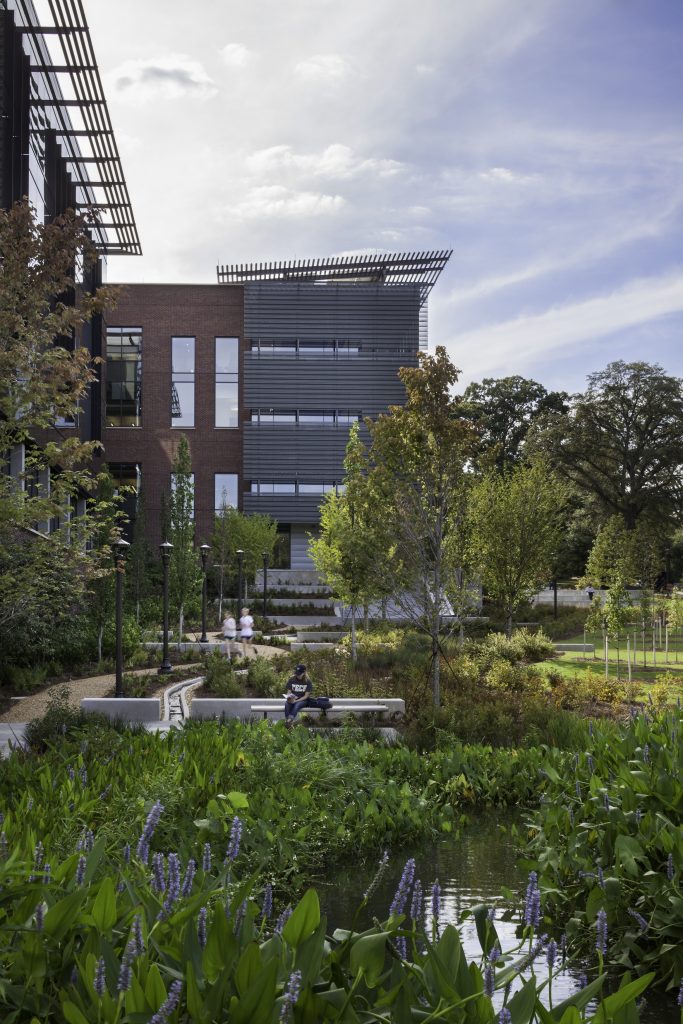
The Engineered Biosystems Building at Georgia Tech. Image courtesy of Chris Cooper
The resulting design approaches layer a series of water harvesting strategies to capture rainwater, condensate, and foundation dewatering to flush toilets, feed a recirculating water feature, and augment base flow to a stormwater treatment wetland. This provides habitat and reduces potable water needs and discharges to the combined sewer. But the wider impact –the real stretch of the handprint–was the shift in team’s perspective from ‘building a building’ to creating a regional model for appropriate design that held the health of the river miles downstream paramount. For the Kendeda Building for Innovative Sustainable Design, another campus project currently under construction and in pursuit of the Living Building Challenge Living Certification, Georgia Tech is now providing even more watershed protection by including composting toilets.
With forward-thinking cities turning to ecology as a foundation for planning, the potential shift from footprint to handprint is considerable. The City of Baltimore recently developed a “Green Network Plan,” to transform vacant and abandoned properties into an interconnected system of flourishing community spaces that benefit the City’s people and ecology while laying the foundation to revitalize some of its most challenged neighborhoods. Working with the City, Biohabitats’ first step was to examine the ecosystems that underlie the city and the services they provide. This included acknowledging historic and lingering environmental injustices resulting from a legacy of racism. The team then gathered input from the people of Baltimore—not just advisory groups, subcommittees, agencies, and NGOs, but people who live in the neighborhoods most in need. The Green Network Plan, which was just approved and adopted by the City this fall, celebrates and improves Baltimore’s historic streams and native ecology while connecting open space with safe, accessible, and increasingly green corridors.
In Atlanta, planning officials faced with an urgent need to preserve and enhance the city’s unique natural resources while accommodating projected population growth took a progressive step with “Atlanta City Design,” a vision for the future that embraces the core values of Equity, Progress, Ambition, Access, and Nature. They’re now developing an “Urban Ecology Framework” that will equitably guide development in a way that protects and expands native forests, conserves and enriches biodiversity, provides public access to quality greenspace, and fosters resilience through community stewardship. In crafting this Framework with Atlanta’s Planning Department, Biohabitats is examining the city’s ecology, assessing its habitat and biodiversity needs, and actively engaging its people—through public workshops, open houses, and meetings—to understand what Nature means to them and the ways in which natural systems might intersect with the areas of their lives they’d like to see improved.
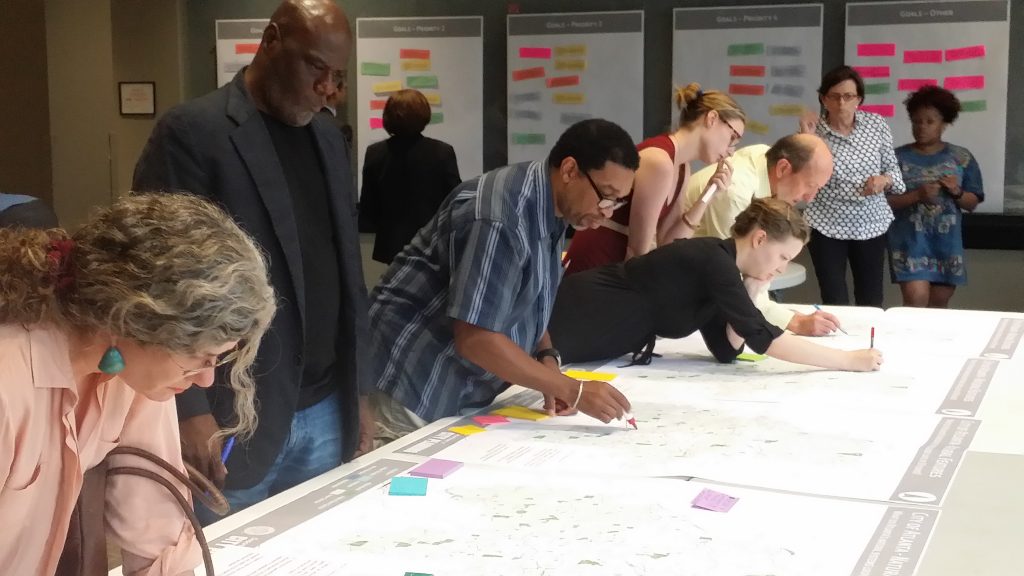
Planning officials in Atlanta working on the Urban Ecology Framework. Image courtesy of Biohabitats
These planning efforts are not just connecting urban green spaces and stimulating economic development. They are improving, unearthing, restoring, enhancing access to, and celebrating the natural systems that pulsate between and below the buildings and infrastructure we have erected on top of them—systems that, quite literally, keep these cities alive. And they are doing so in ways that ensure that all residents benefit from their city’s natural assets. Now that’s a handprint.
Flowers are stunning in their beauty, efficiency, and design. But when we think about our potential to imprint the places we touch with an ever-expanding handprint of good, perhaps we ought to start thinking about sowing the seeds of entire wildflower meadows.


